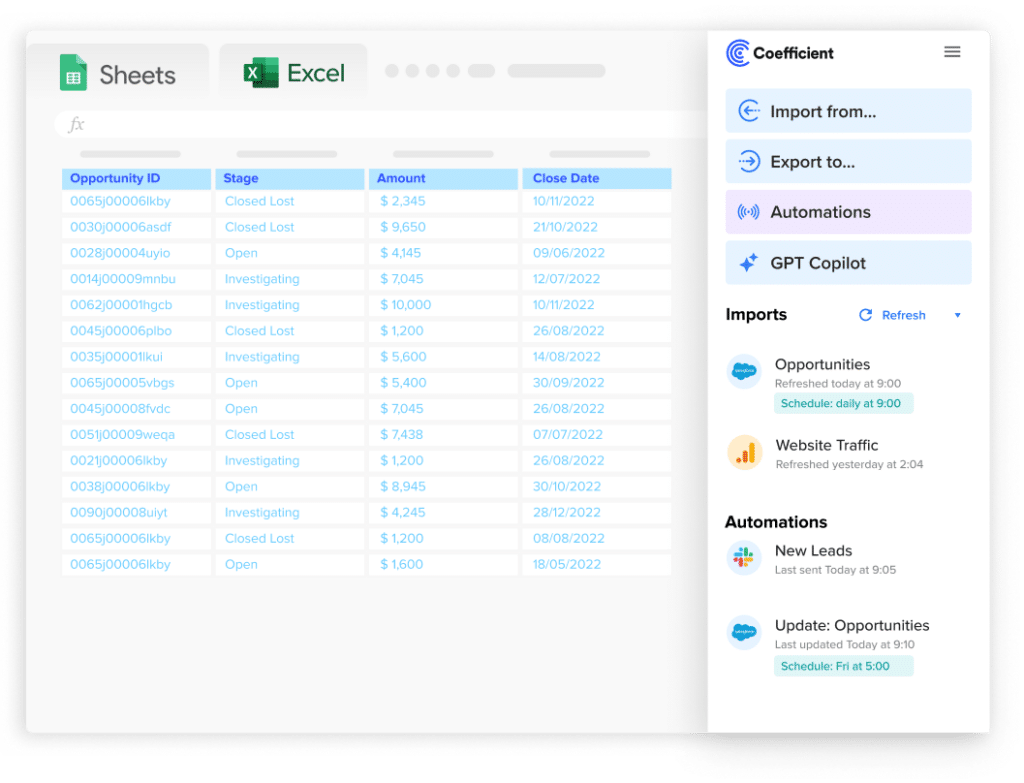Break-even analysis is an important tool when evaluating the sales volume or level of business activity needed to become profitable. Break-even analysis can be done in multiple software solutions, including Microsoft Excel, a popular platform for business owners and financial analysts.
Let’s explore how it works!
Step-by-Step Guide: Break-Even Analysis in Microsoft Excel
In order to perform a break-even analysis in Excel, you must first compile your product’s sales price, variable costs, and fixed costs. These components are the inputs that will determine your break-even point.
- Sales price is the per unit price you will charge customers for your product.
- Variable costs are expenses that change in proportion to how many units are produced and then subsequently sold. These typically include the materials and direct labor involved in producing the product.
- Fixed costs are expenses that don’t change regardless of how many units are produced and subsequently sold. An example of this would be rent expense. No matter how many units are produced, your monthly rent expense for the building will remain the same.
Step 1: Set Up Your Environment
Set up your Excel sheet with your sales price, variable costs, and fixed costs that you can reference to build out your break-even analysis.

Step 2: Create a Data Table for Units Sold
Set up your worksheet to include intervals of units that you would anticipate selling as part of your business. This will vary depending on the gross margin (sales price minus variable costs) and how significant your fixed costs are.
Typically, items that sell for a lower price per unit will require more units to break even.

Step 3: Build the Break-Even Formula
After you’ve outlined the number of units you anticipate selling, build a formula in Excel to calculate the net income at the volumes that you outlined.
Use this break-even point formula: =((Sales Price – Variable Costs) x Units Sold) – Fixed Costs
When setting up this formula, use a $ between the column letter and the row number (see the screenshot below). This locks in the row referenced for the sales price, variable costs, and fixed costs so the formula can be copied down for each units sold quantity without manual changes.
If you have significant variable expenses and/or fixed costs, use a SUM function to total all expenses in each category.

Step 4: Calculate Net Income at Different Sales Volumes
After you’ve populated your formula you can copy it down by dragging the bottom right corner of the cell down to the other units sold amounts. This will allow you to approximate your break-even point and assess profitability at different sales volumes.
In this example, the break-even point is between 3,000 and 3,500 units produced.
Step 5: Prepare for Goal Seek
To get the exact break-even point in units, you’ll use the Goal Seek function. The Goal Seek function allows you to get the correct input value, in this case units sold, when the desired output value is known, in this case the break-even point.
Copy the formula from Step 3 down to a row without any units sold input.

Step 6: Access the Data tab
Once this has been done navigate to the Data tab in Excel.

Step 7: Use the What-If Analysis Tool
Within the Data tab, in the Forecast section, find the drop-down labeled ‘What-If Analysis’. Click this dropdown and select ‘Goal Seek’.

Step 8: Set Up Goal Seek
Once Goal Seek has been selected, three prompts will pop up (set cell, to value, and by changing cell), as outlined below.

“Set cell”
For this prompt, you will need to select the profit cell that you copied down in step 5 (in this example E11).
We are trying to calculate how many units we need to produce break-even, which means producing a net income/profit of $0.

“To value”

Stop exporting data manually. Sync data from your business systems into Google Sheets or Excel with Coefficient and set it on a refresh schedule.
Get Started
For this prompt you will want to input 0. When performing a break-even analysis, you are calculating how many units you would need to produce and sell to break-even or have $0 in net income.

“By changing cell”
For this prompt you will need to select the units sold cell (D11). The profit in cell E11 is calculating based off the units sold in this cell.

Once you’ve filled out the three prompts in the Goal Seek function select the OK button.
Step 9: Interpret the results
After you select’ OK’ Excel will calculate the break-even point. In this example, the number of units needed to break-even would be 3,400.

Next Steps: Performing Sensitivity Analysis in Your Break-Even Excel Model
After calculating the break-even point, perform sensitivity analysis within your Excel financial model to see how changes in inputs affect your break-even point in units.
Examples include:
- Adjusting your sales price: If you increase or decrease your price per unit by $5, recalculate how many units you need to sell to break even.
- Modifying variable costs: Determine how negotiating lower raw materials costs or increasing direct labor costs by $1 per unit affects your break-even point.
- Changing fixed costs: Calculate how reducing rent by $1,000 or adding a new facility impacts the number of units needed to break even.
You can analyze these scenarios individually or combine multiple changes for comprehensive what-if analysis.
Use Cases for Break-Even Analysis:
A break-even analysis determines the break-even point – where total revenue equals total costs, resulting in zero profit or loss. It’s valuable for:
- Calculating the minimum sales volume needed for profitability when starting a new business or expanding an existing one.
- Evaluating your selling price, variable expenses, and total fixed costs to identify products requiring price increases or areas for cost reduction.
- Assessing the viability of adding a new product to your current portfolio.
Break-even analysis is a crucial tool for business planning, financial modeling, and performing cost-volume-profit analysis (CVP) to make informed decisions about pricing, costs, and sales targets.
Improve Your Break-Even Analysis with Live Data
Break-even analysis in Excel is a powerful tool for business planning and financial modeling. By following this guide, you can make informed decisions about pricing, costs, and sales targets.
Ready to take your data analysis to the next level? Try Coefficient to seamlessly integrate your Excel sheets with live data from various business systems, enabling real-time break-even analysis and more advanced financial modeling.

